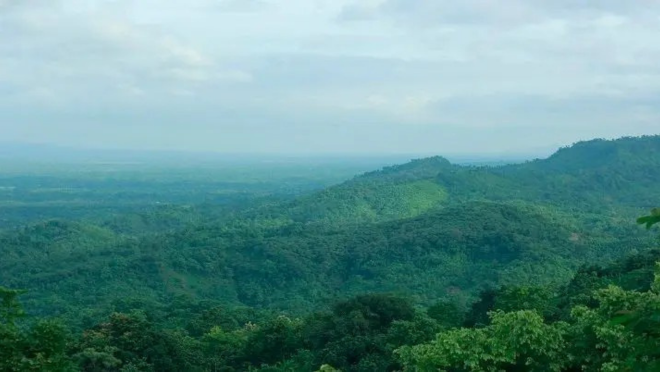Best tourist spots in Khagrachhari for your next vacation
Best tourist spots in Khagrachhari for your next vacation

Nature has a way of refreshing the mind and body. If you want to watch the sun rise or set from hilltops, spend quiet hours by a sparkling waterfall, or experience the culture of indigenous communities, Khagrachhari is the place to go.
Located about 112 km from the port city of Chattogram, Khagrachhari is one of the three districts of the Chittagong Hill Tracts. Also known as Chengmi, Mong Circle, or Phalang Htaung, the district is blessed with an undulating landscape, three rivers (Chengi, Maini, and Feni), and a serene charm that attracts travellers year-round. Here are some of the best places to explore in Khagrachhari.
Richhang Waterfall
If you want to bathe in a natural cascade, don’t miss Richhang Waterfall. Though not very large, it transforms into a lively spring during monsoon. The water rushes down the hillside with force, offering both thrill and beauty. Surrounded by a tropical forest, the waterfall creates a refreshing atmosphere.
How to reach:
If travelling by bus, get off at the Richhang bus stop, located about 10 km before Khagrachhari town on the Chattogram–Khagrachhari highway. From there, it’s a 2.1 km walk. The path through the green hills is scenic but can be slippery in the rainy season, so tread carefully.
Alutila Hill Cave
Popularly known as the “mysterious cave,” Alutila Cave lies beneath Arbari or Alutila hill, about 1,000 metres high. The cave, about 100 metres long, feels like a natural subway with cool water flowing along its floor. Walking through its darkness, with only the echo of your footsteps, is an eerie yet memorable experience.
How to reach:
The cave is about 8 km from Khagrachhari town and can be reached by bus, jeep, or auto-rickshaw.
Nunchhori Debota Pond
Perched about 1,600 feet above sea level, Nunchhori Debota Pond (also called Matai Pukhiri, or the Lake of God) is considered sacred by the Tripura community. According to local legend, its waters never dry up or become polluted. This serene spot is perfect for those seeking a spiritual escape.
How to reach:
From Khagrachhari, take a Chander Gari towards Maichchari Army Camp. From there, the Tripura village is about 4 km away, and the pond requires another 4–5 km trek uphill. Cars can go up to the village, but the final stretch must be done on foot.
Panichari Brihot Buddha Sculpture
For a peaceful and spiritual experience, visit Panichari Shantipur Aranya Kutir, home to the largest statue of Gautam Buddha in Bangladesh. Known as the Panichari Brihot Buddha Sculpture, this spot is popular with visitors of all faiths.
How to reach:
Located about 25 km from Khagrachhari town, the site can be reached by bus at a fare of around Tk35. The road is relatively flat, making it accessible for elderly travellers as well.
Centuries-Old Banyan Tree
In Matiranga upazila, a massive banyan tree—believed to be over 400 years old—stands as a living monument to time. Known locally as Porjoton Bot Gach or Alutila Bot Gach, it spreads across a large area with countless smaller trees sprouting from its roots. Researchers consider it one of the largest banyan trees in the country.
How to reach:
Take a bus from Khagrachhari to Matiranga Bazar (fare about Tk20). From there, hire a motorbike (Tk80 to 100) for a round trip to the tree.
Sajek Valley
No Khagrachhari trip is complete without Sajek Valley. Known for its breathtaking sunrises and sunsets, Sajek offers a stunning blend of green hills, blue skies, and cloud-kissed peaks. Adventurers can trek from Ruilui village to Konglak village, which sits on Mount Shipu, the highest peak in Sajek. The panoramic view from the top is unforgettable.
Konglak village also provides a glimpse into the simple lifestyle of the indigenous people. Don’t miss sipping local coffee or tasting freshly picked tangerines while enjoying the views.
How to reach:
Though Sajek lies in Rangamati district, it can only be accessed through Khagrachhari. From Khagrachhari town, hire a Chander Gari to Dighinala, then take another to Sajek. Alternatively, you can hire a reserved vehicle directly from Khagrachhari.
Best Time to Visit
Winter is the most popular time to visit Khagrachhari, with clear skies and pleasant weather. However, during the monsoon, waterfalls come alive and the hills turn lush green. Do note that landslides are common in the rainy season, which can disrupt travel, so always check weather conditions before planning your trip.


